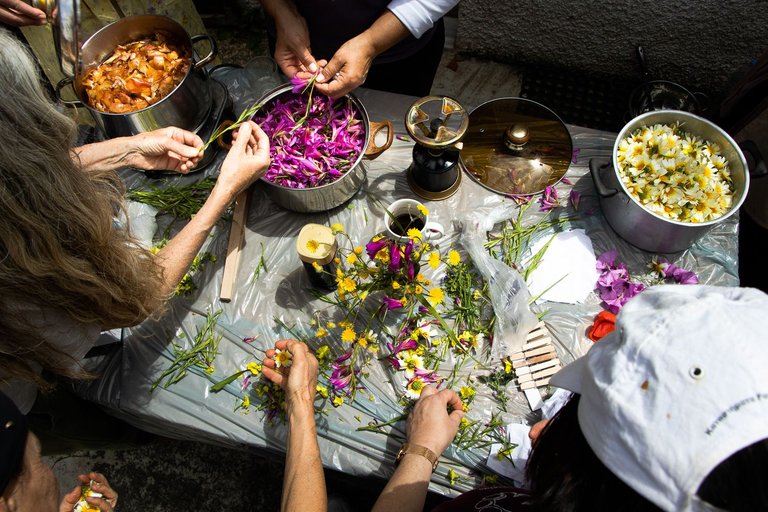
There was a beautiful gathering about natural dyeing that took place late this spring and since then I want to share it with you, but either I had other things to share or I kept myself too busy to do anything else than my small experimentations, as I did (or maybe overdid) this last month. Experimentations that kept me away from my laptop and camera for longer than I could imagine, almost completely lost in my world, a very creative period in many levels.
In my defense, I started writing a post twice and both times my laptop broke down completely, how weird, right? Let's see what happens now :)
A gathering like this starts with some foraging. All this colors look like heaven now in the middle of August that we haven't seen a drop of rain during the last few months. So refreshing looking at these photos! I love summer and every time I never want it to end but the flowers remind me how beautiful all seasons are.
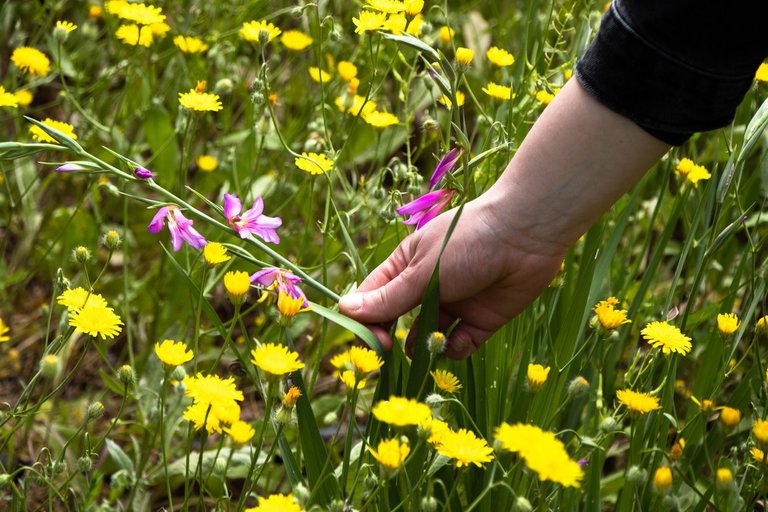
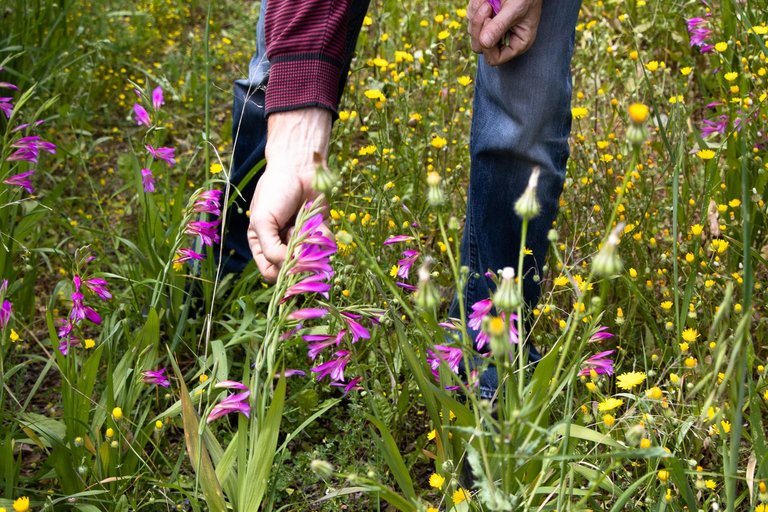
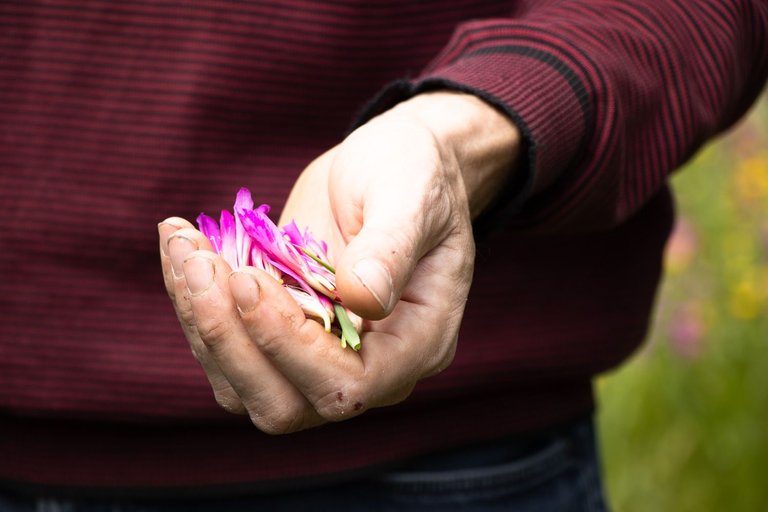
What I find fascinating about natural dyeing is that it works only with natural fibers. You can naturally and beautifully dye cotton, silk, wool, linen and more but the color will never mix with synthetic fabrics. Another great opportunity to sit and think of what we wear, what we put on our skin.
I don't know about you, but I always feel sooo good when I wear natural clothes, especially in summer when our skin needs more than ever to breath freely :)
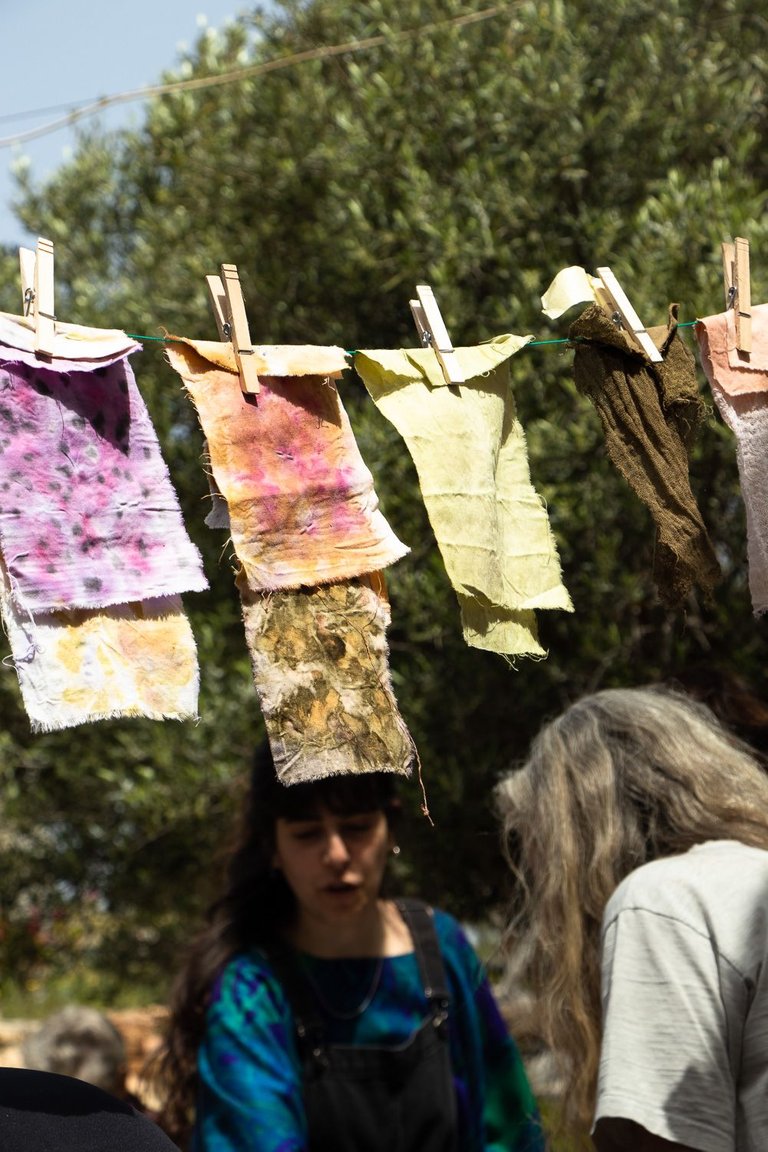
The process is quite simple, but also quite slow :)
And the slowest a process is, the more it triggers my highly active, very busy and sometimes confused brain, hehe!
Most natural dyes need mordant in order for the color to adhere well to the fabric and to last longer, to be brighter and clear. Many options for mordants like potassium aluminum sulfate, one of the most used ones.
Personally I have only tried soy milk, which is good for plant fibers but not animal fibers, like wool.
Dyes high in tannins, like black tea, avocados and onion skins, don't even need mordant. Kind of magic :)
But mordant could help having more clear colors even in these cases.
Collective work and happy hands working all together.
I am not good in telling you the proportions, but I remember I have read somewhere that 1 part plants and 5 parts water must be ok. I think you can feel it when you make it yourself :)
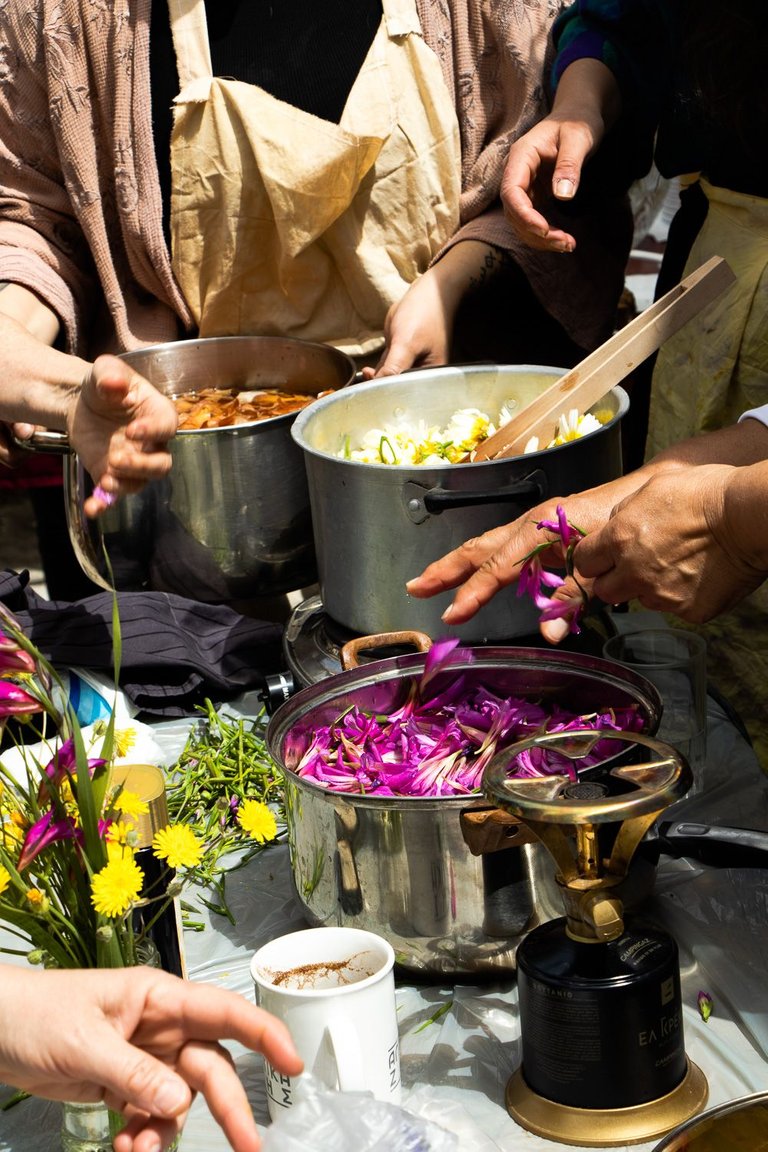
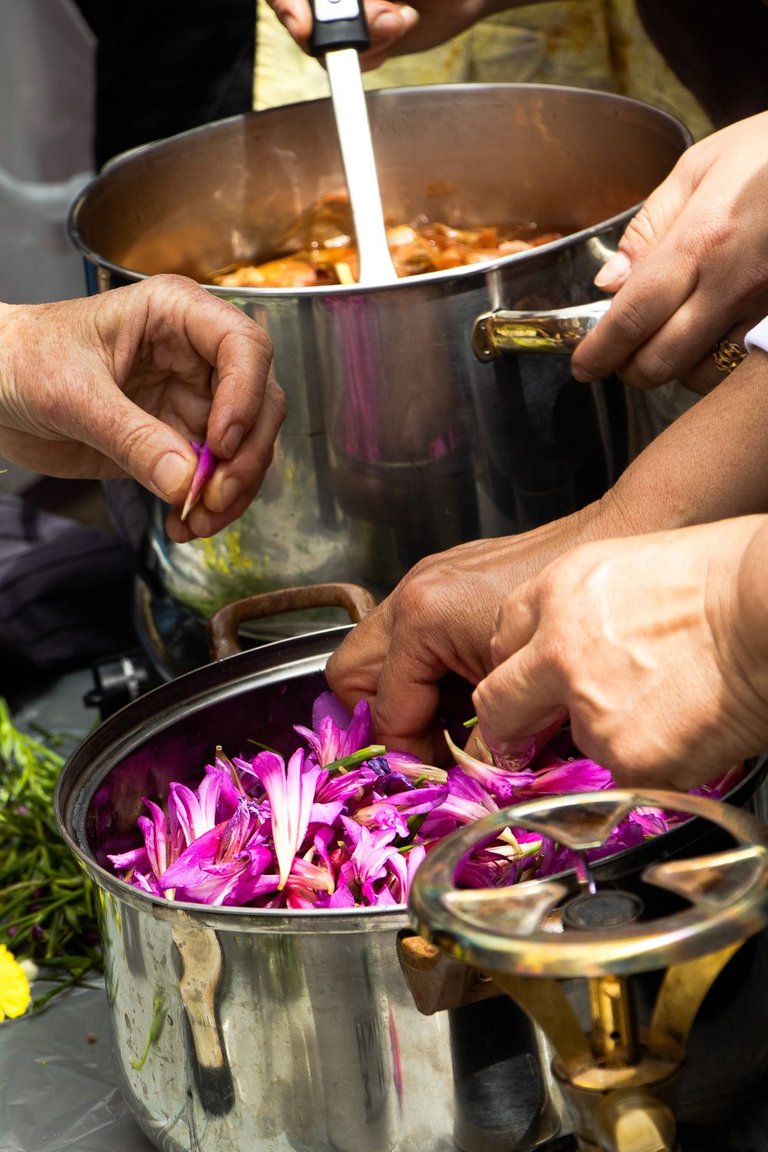
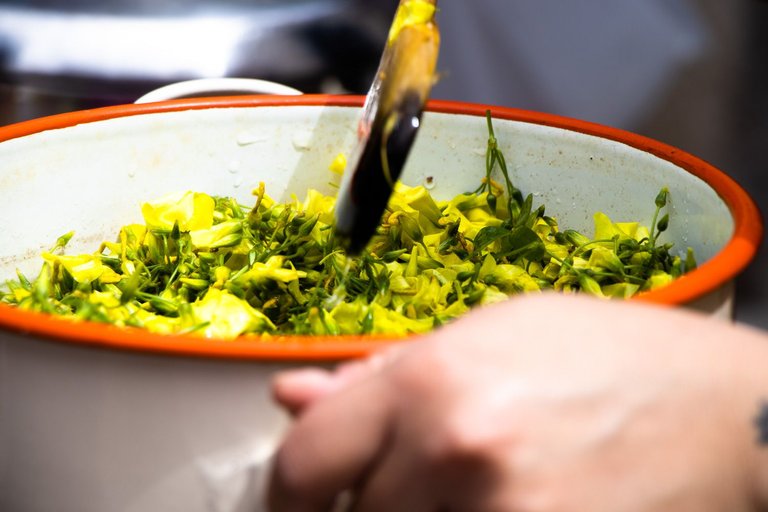
In low heat for about 20-30 minutes and then leave it for a couple of hours or maybe even for the whole night, depending how strong you want the color to be.
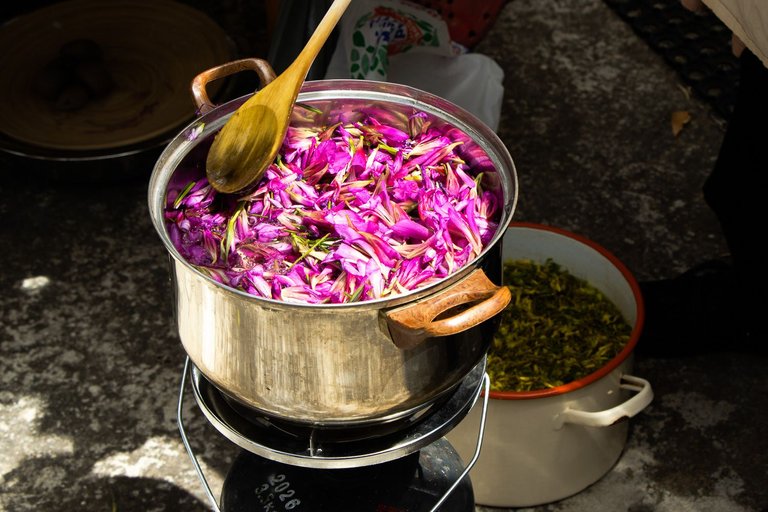
This one looks dreamy. Truth is that just a very light grey color came out of it. But how can you know if you don't try it?

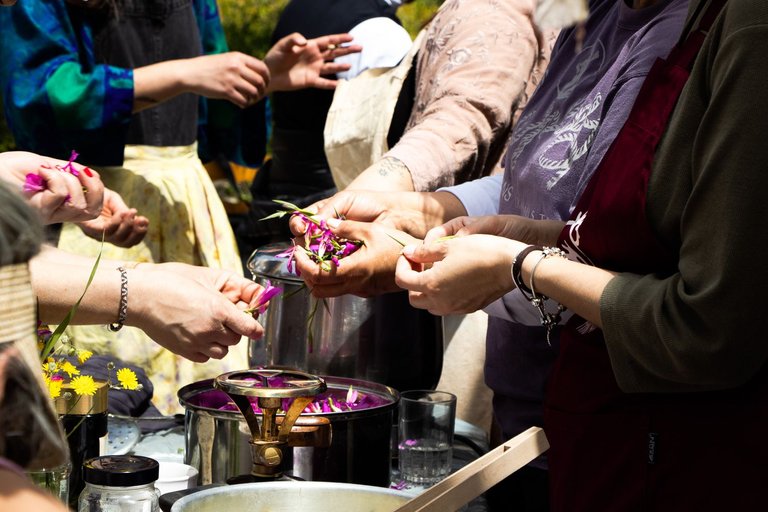
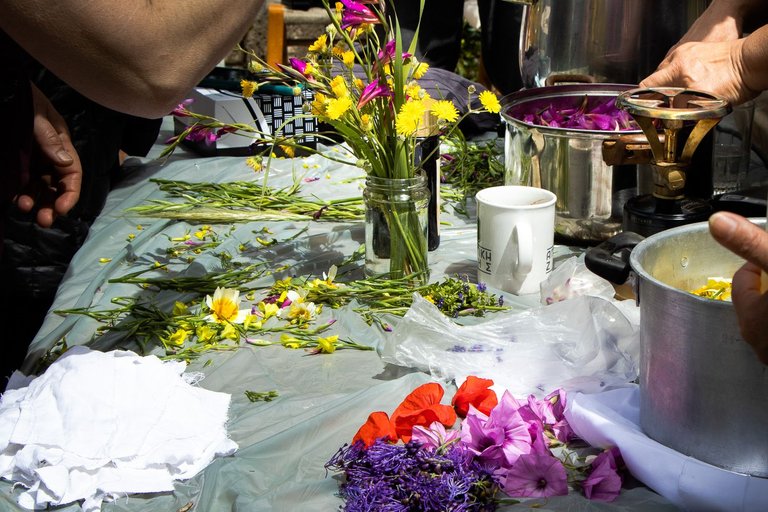
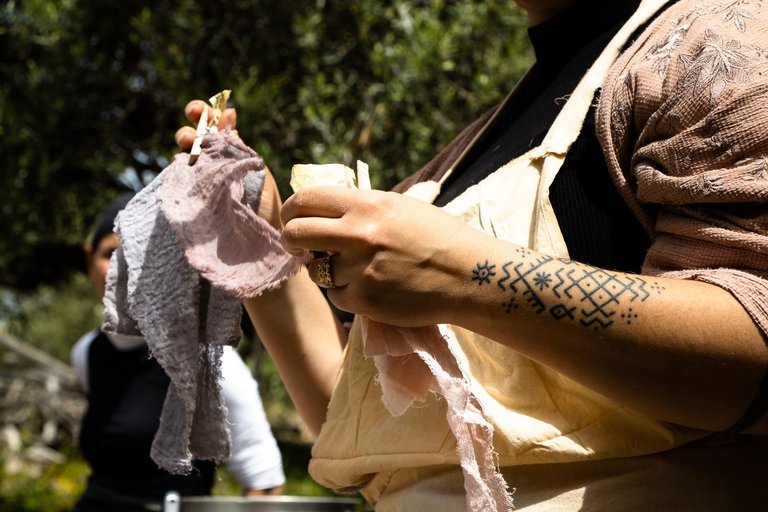
The field of experimentations is endless.
Here is a piece of fabric dyed with Oxalis pes-caprae and then dipped in iron rust to get a deeper color. Rust by the way is also a great mordant.
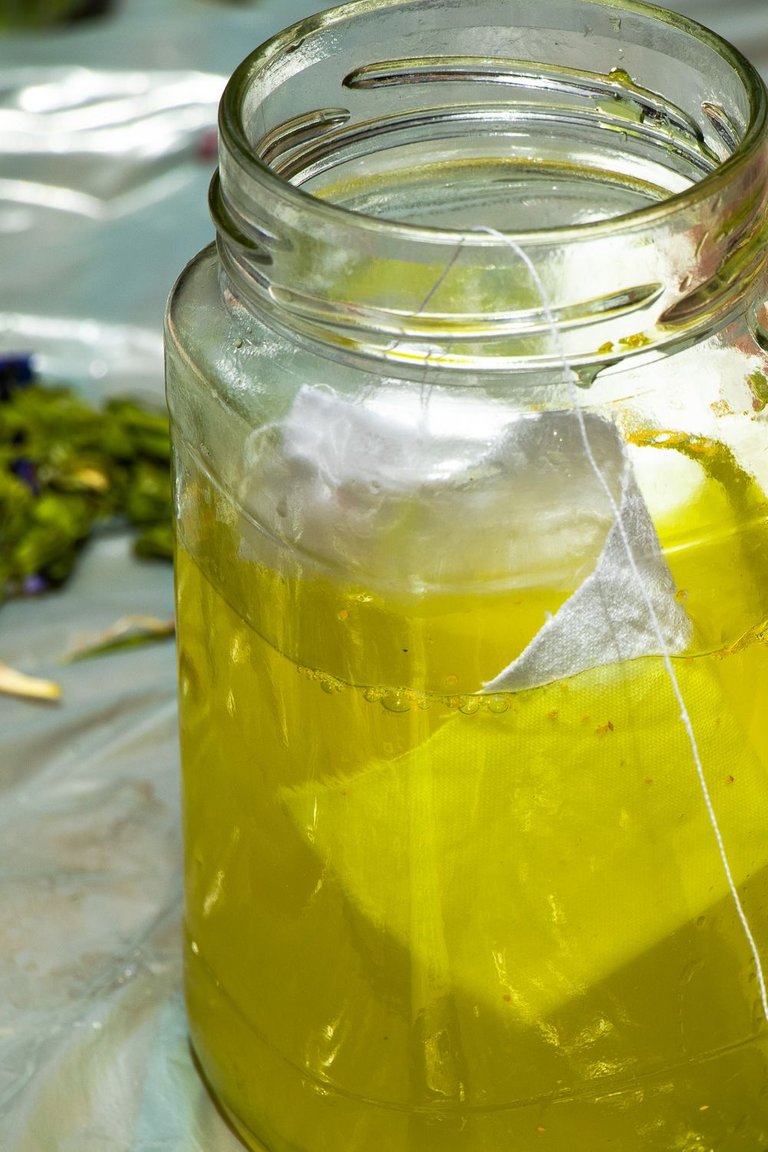 | 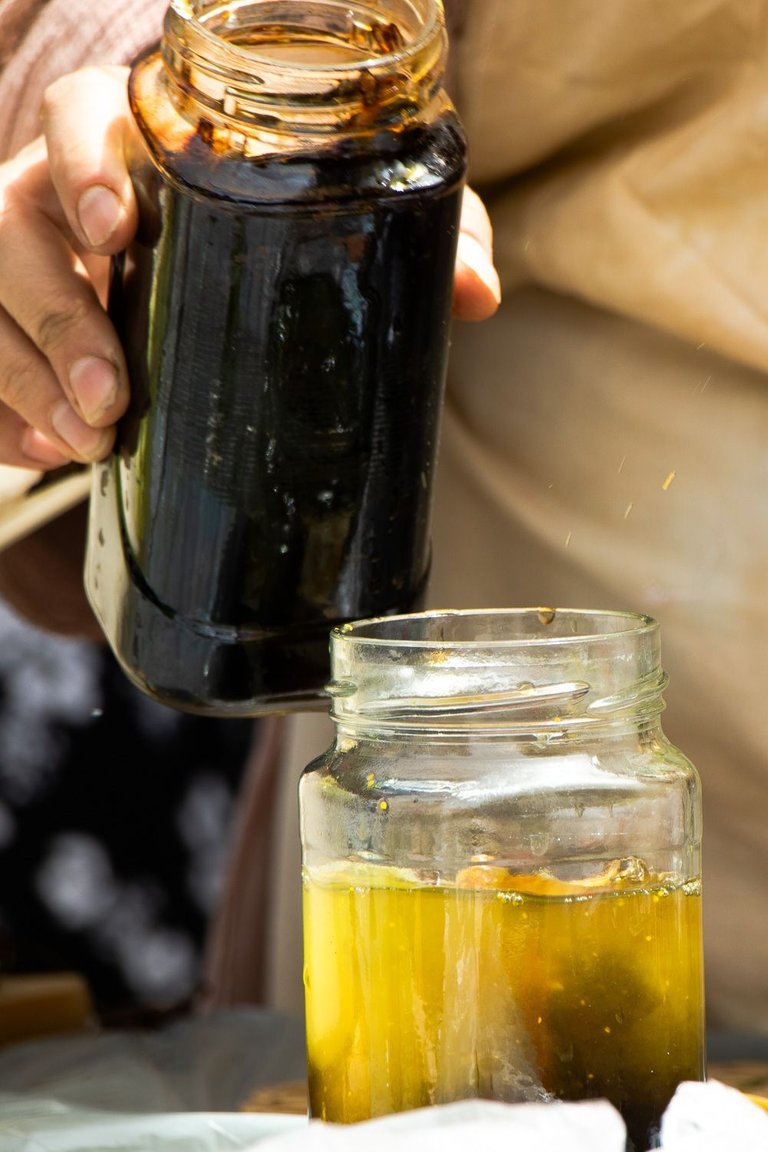 |  |
|---|
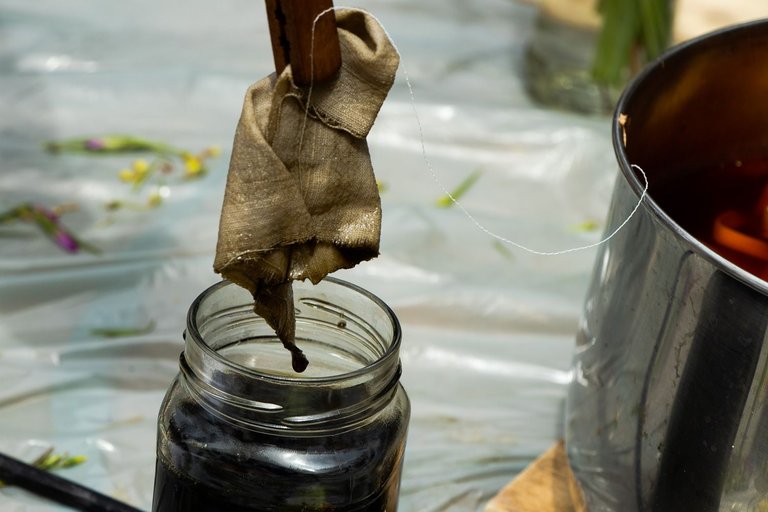
This is the yellow from Oxalis. Powerful and so bright. No wonder why locals call it "the Dye".
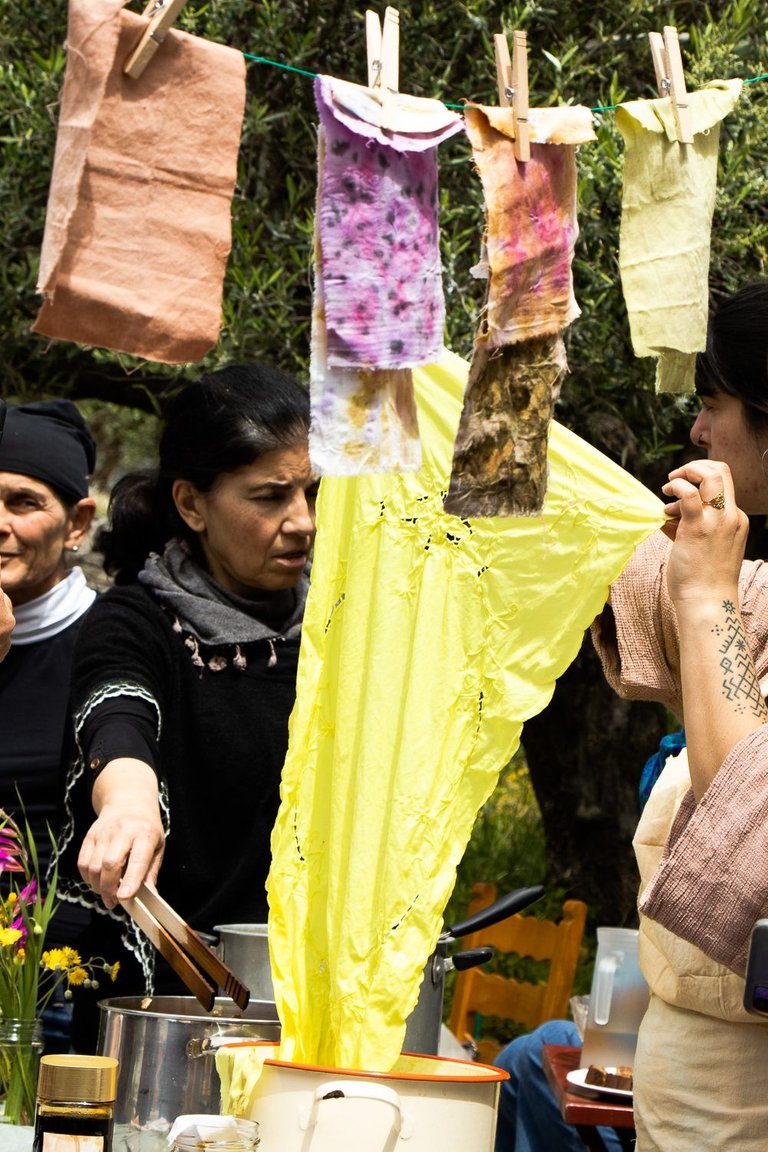
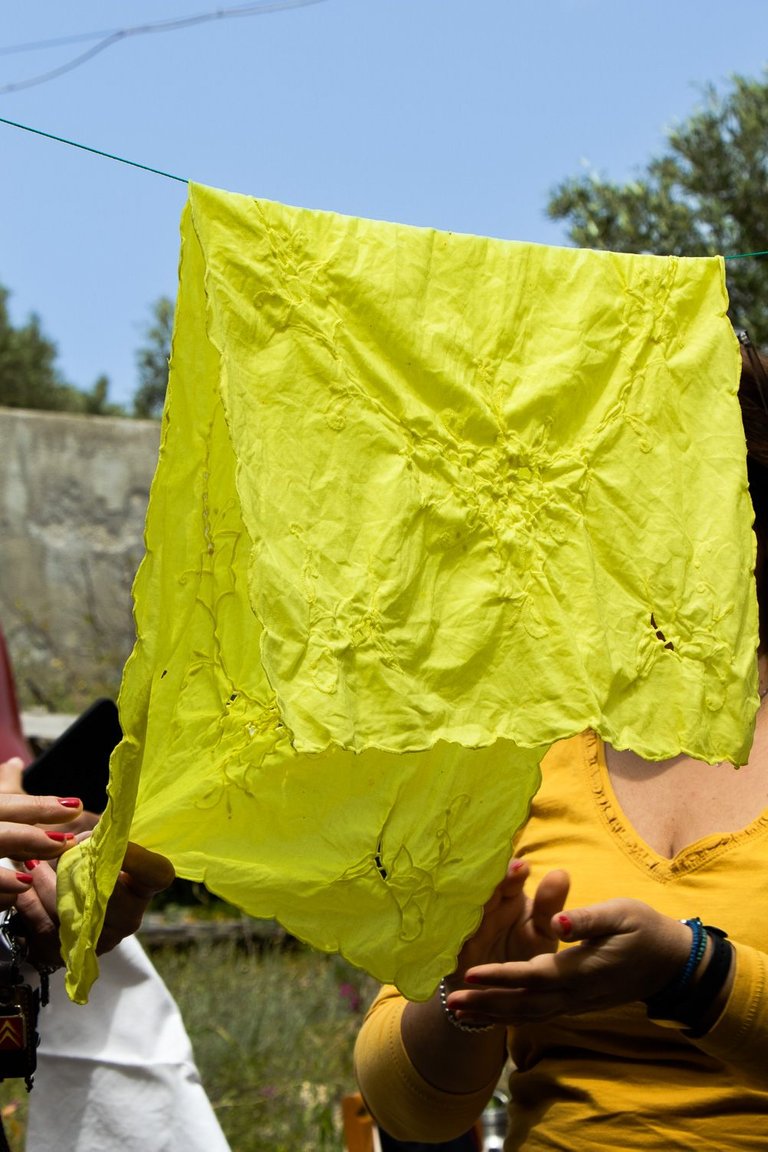
Onion skins. This is my current humble experiment and I am going to share hopefully soon! We are in mordant state for now :)
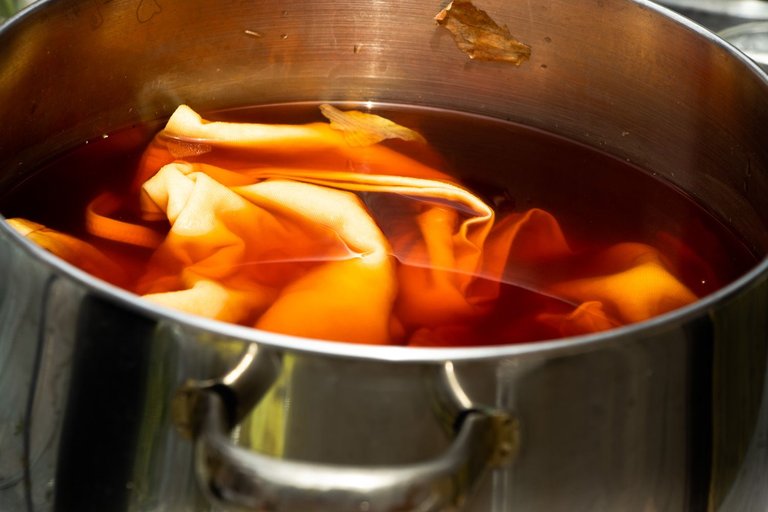
I look at these photos and I wonder why we should bother with other things and not just do fun stuff! Ok, I know the answer, but I still wonder how we have come to this point.
These are ancient techniques and their knowledge is deep inside each one of us. Maybe that's why all these processes feel so natural.
This must be my favorite picture. Fresh daisies in the pot :)
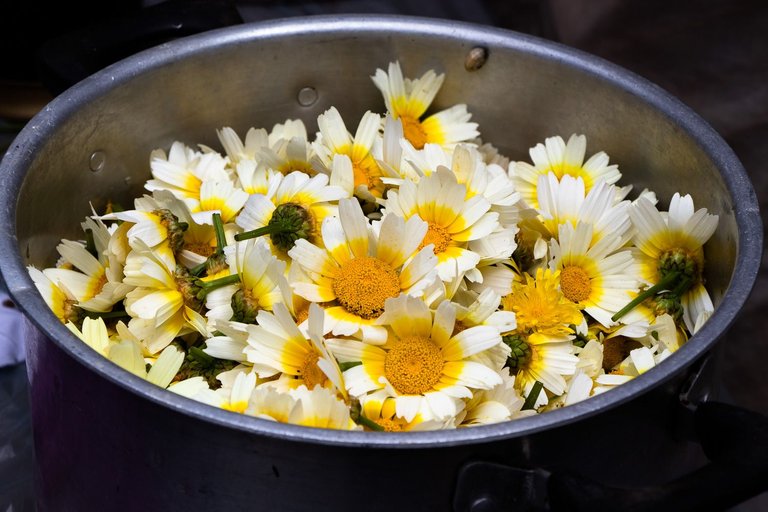
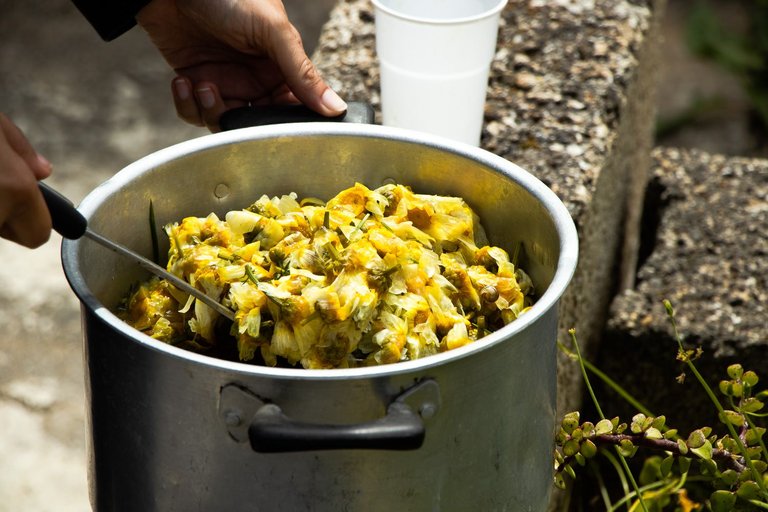
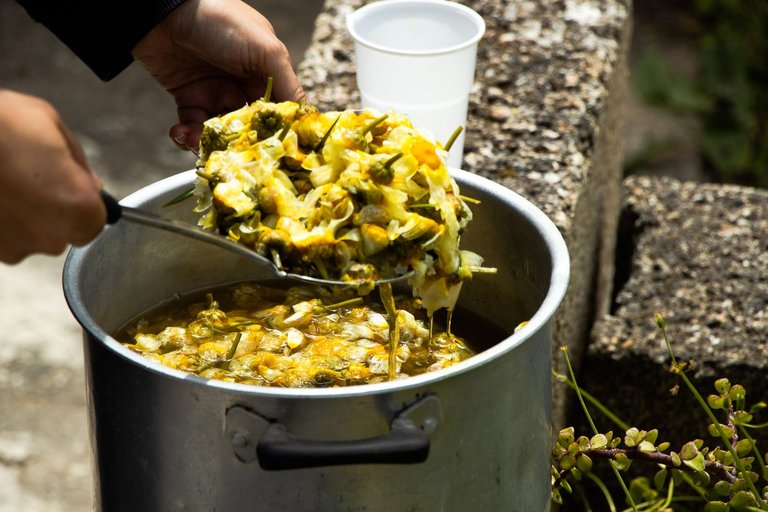
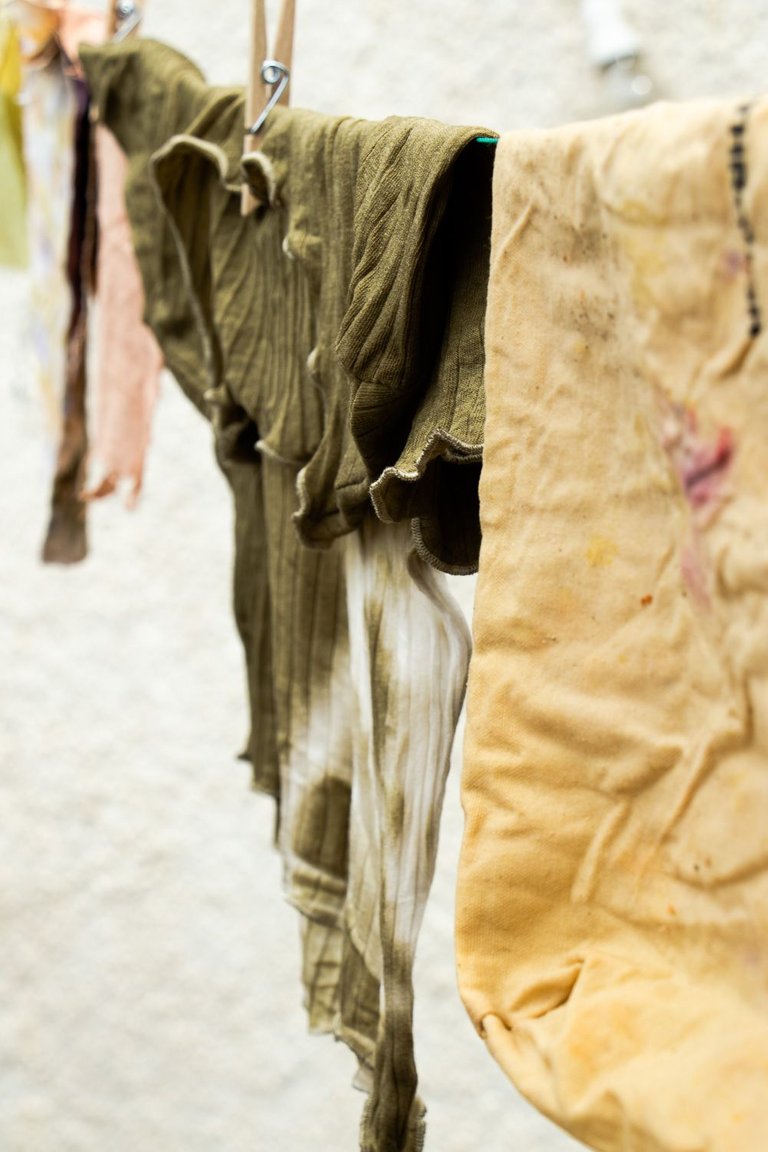
It is a fascinating world the one of natural dyes. More to share soon. Questions are welcome, although it is very possible that I don't have the answers, but someone else might knows!
And projects you have done are more than welcome :))
If you would like to know more about me this is my introduction post.
